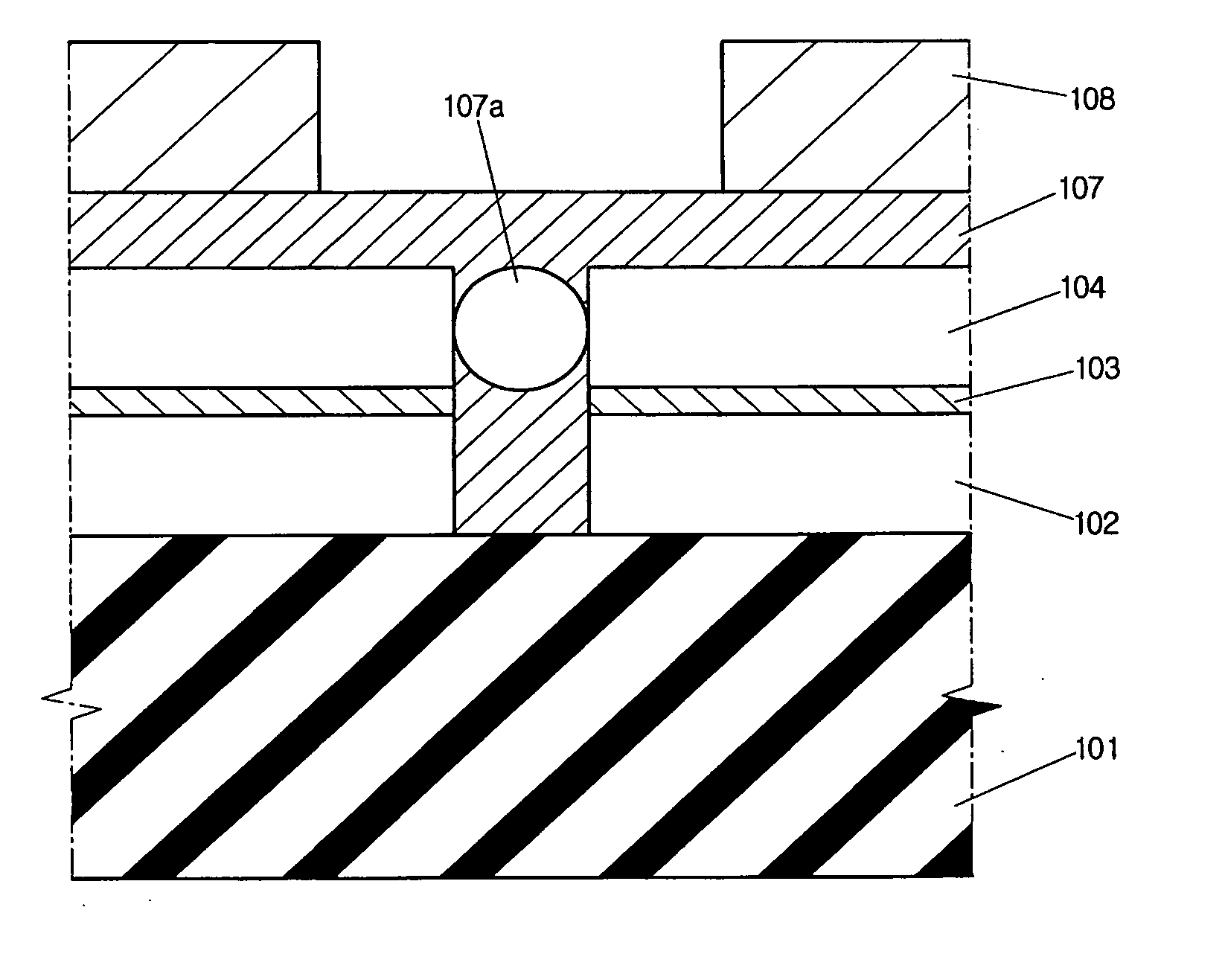Method for manufacturing semiconductor device
- Summary
- Abstract
- Description
- Claims
- Application Information
AI Technical Summary
Benefits of technology
Problems solved by technology
Method used
Image
Examples
Embodiment Construction
[0030] Hereinafter, a preferred embodiment of the present invention will be described with reference to the accompanying drawings. FIGS. 2A to 2F are cross-sectional views showing a method for manufacturing a semiconductor device according to a preferred embodiment of the present invention.
[0031] First, as shown in FIG. 2A, a first interlayer dielectric 202 with low permittivity is deposited on a semiconductor substrate 201. Herein, although not shown in the drawing, it is evident that on the semiconductor substrate, an isolation layer defining an active region of the substrate 201, a capacitor and / or a transistor on the active region, etc. may be previously formed.
[0032] The first interlayer dielectric 202 can be formed of various materials. In particular, a tetraethyl orthosilicate (TEOS)-based oxide layer (such as Low Pressure-TEOS, O3-TEOS, d-TEOS and so on), undoped silicate glass (USG), fluorosilicate glass (FSG), SiH4-based glass layer (e.g., deposited by High Density Plasm...
PUM
| Property | Measurement | Unit |
|---|---|---|
| Temperature | aaaaa | aaaaa |
| Temperature | aaaaa | aaaaa |
| Thickness | aaaaa | aaaaa |
Abstract
Description
Claims
Application Information
 Login to View More
Login to View More - R&D
- Intellectual Property
- Life Sciences
- Materials
- Tech Scout
- Unparalleled Data Quality
- Higher Quality Content
- 60% Fewer Hallucinations
Browse by: Latest US Patents, China's latest patents, Technical Efficacy Thesaurus, Application Domain, Technology Topic, Popular Technical Reports.
© 2025 PatSnap. All rights reserved.Legal|Privacy policy|Modern Slavery Act Transparency Statement|Sitemap|About US| Contact US: help@patsnap.com



